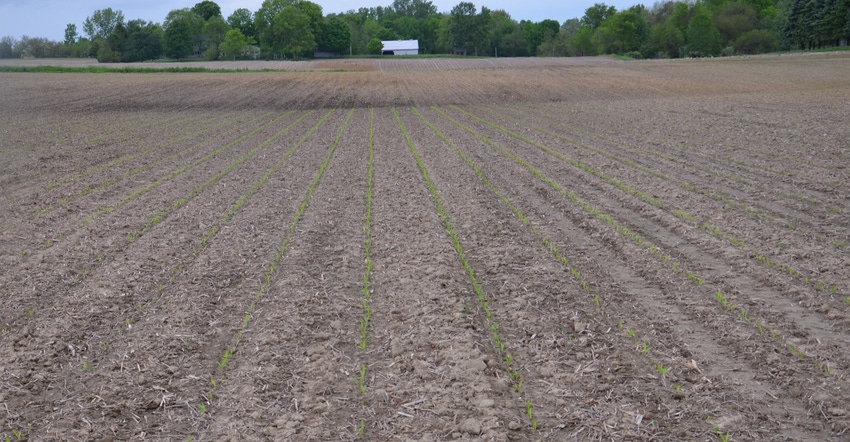
OK, corn likes it warm when growing. That’s a no-brainer. But a pair of researchers looked at exactly how corn responds to warmer temperatures as it germinates and grows. What they found may help you better understand why corn planted in cool soils or subjected to cool weather after planting struggles until conditions warm up.
Maria Stoll, former senior research associate for DuPont Pioneer, and Imad Saab, a former research scientist for Pioneer, conducted studies to see exactly how warm corn likes it when growing. Their findings appear in Pioneer’s 2018 Agronomy Research Summary.
Corn is a warm-season crop and does best under warm conditions, the researchers asserted. To prove this, they germinated three hybrids of varying maturities at different temperatures, ranging from 59 degrees F to 95 degrees F. They measured both shoot growth and root growth. Most people understand warm weather causes corn to grow faster aboveground, but may not think about what’s happening belowground.
Which temperature resulted in the fastest growth? Was 77 degrees F enough? Was 95 degrees F too hot? Both shoots and roots grew fastest at 86 degrees F, the researchers note. Roots grow considerably faster than shoots early in terms of length of growth per hour. Rate of growth was as fast for shoots at 95 degrees F vs. 86 degrees F, and almost as fast for roots, too. The growth rate at 59 degrees F was less than one-third that of plants germinating at 86 degrees F or 95 degrees F.
Genetics matter
Soil temperatures after planting can influence plant stress. Hybrids vary in their response to soil and air temperatures. Different companies use different terms and rating scales to distinguish between hybrids. Terms include “seedling vigor” and “cold tolerance.” Stoll and Saab took a group of Pioneer hybrids with lower stress emergence scores and compared them to hybrids with higher scores. Higher scores in Pioneer’s system indicated hybrids that would likely have reduced stand loss due to genetic variability.
This test was conducted in 2009 at six locations ranging from Iowa to Quebec in Canada. Lower temperatures at the various locations ranging down to 44 degrees F represented varying degrees of stress. Both groups of hybrids experienced stand loss as cold stress increased. However, the researchers noted that hybrids from the group with higher scores for stress emergence maintained higher plant populations than hybrids from the group with lower stress emergence scores.
Timing of stress
A simple lab test indicated what happened when cold stress occurred after planting. The researchers took a few hybrids from the low-score group and some from the high-score group; germinated them in rolled towels for either zero, 24 or 48 hours at 77 degrees F; and then subjected them to melting ice for three days before allowing them to recover for four days at 77 degrees F.
Both groups showed significant stand loss if the stress occurred immediately. However, hybrids from the higher-scoring group posted a higher germination percentage. The researchers noted that germination rates for both groups were greatly improved if they would uptake water and germinate at warmer temperatures for at least 24 hours before the stress kicked in.
About the Author(s)
You May Also Like




